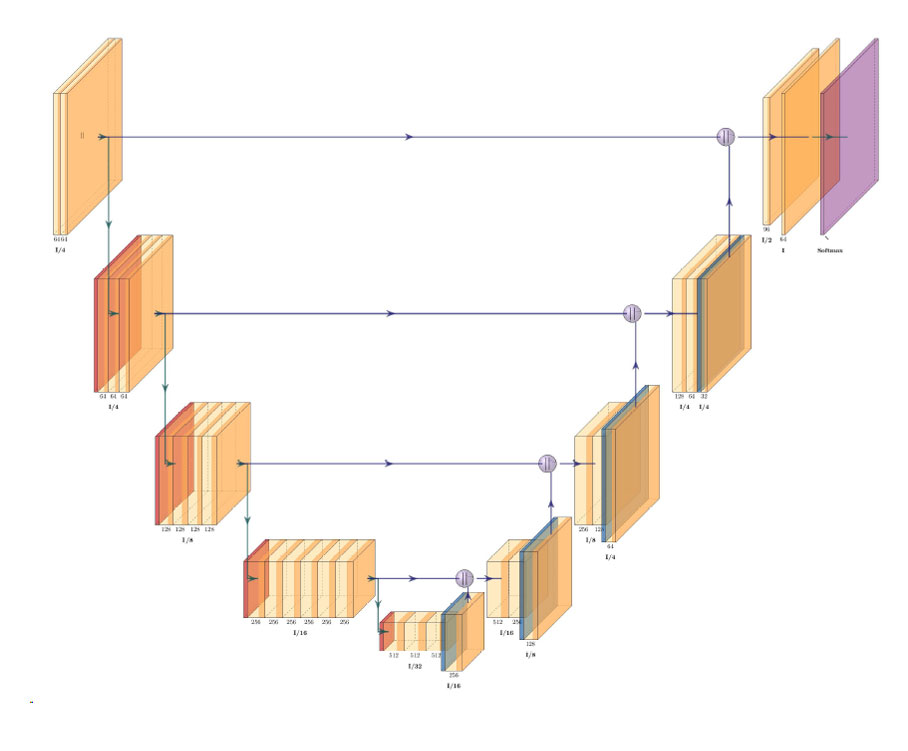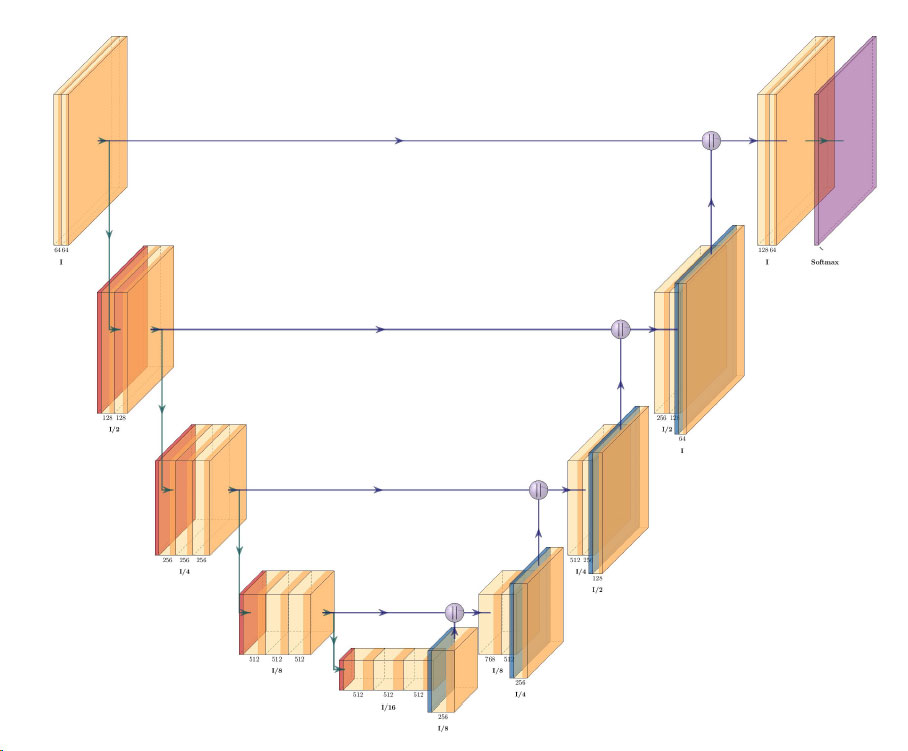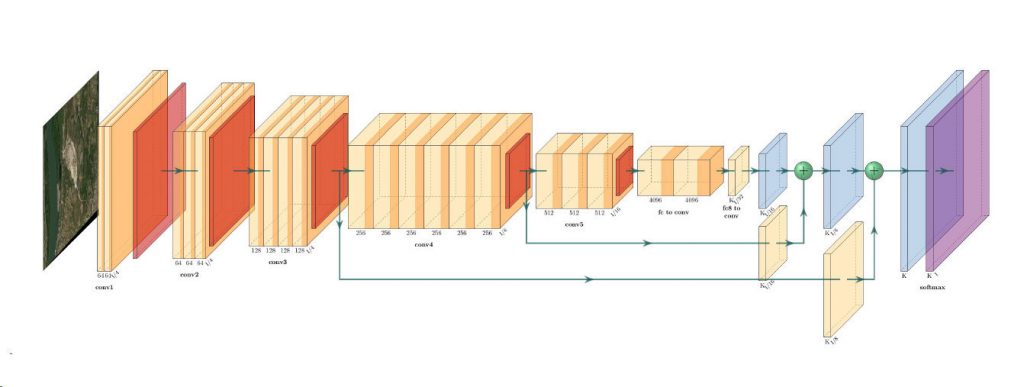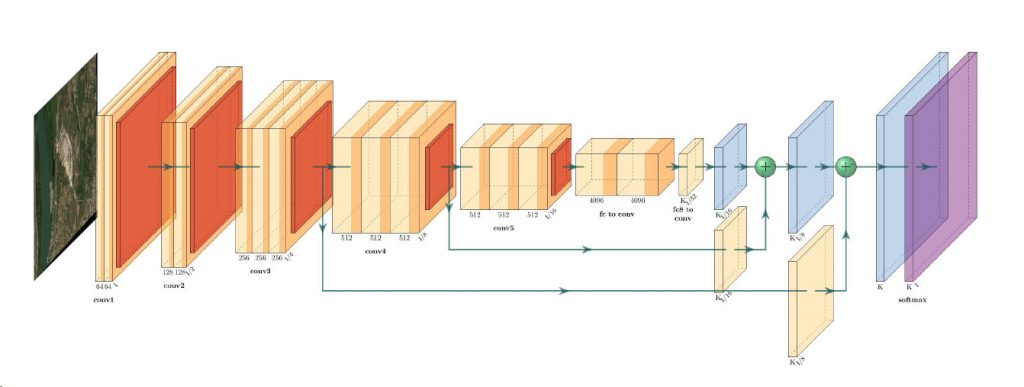Synchronised Collections of SAR and VHR Optical Satellite Imagery Revolutionise Flood Management
- Zuzana Hajkova, Content Marketing Coordinator, EUSI
As climate change accelerates, the frequency and severity of flooding events are becoming increasingly alarming. In response, innovative tools like DoubleShot, developed by European Space Imaging in partnership with Umbra, are transforming flood management strategies. By combining the power of Very High Resolution (VHR) Synthetic Aperture Radar (SAR) and Optical satellite imagery, DoubleShot delivers a comprehensive, weather-independent solution for near real-time flood mapping and monitoring.
The Rising Tide of Climate Change
Extreme precipitation, rising sea levels, higher river flow… These are all results of climate change, leading to an increased risk of flooding across Europe. According to the International Disaster Database, in 2023 alone, flooding affected 1.6 million people in Europe and caused around 81% of the year’s economic losses due to weather and climate-related events on the continent. Only a year later, heavy flooding in September 2024 caused multiple casualties and resulted in 25–65 years loss for insurers in Czechia, Poland and Austria. With many regions experiencing more frequent and intense flooding events, it is now more important than ever to invest in flood preparedness and response solutions.
SAR and Optical Satellite Images in Tandem
The most recent product available is DoubleShot – synchronised collections of 30 cm VHR Optical imagery and 25 cm SAR imagery. How does it work? The collection team at European Space Imaging (EUSI) analyses the orbits of Umbra (SAR) and Maxar WorldView (Optical) satellite constellations and matches collection times so that customers receive both optical and SAR imagery collected over their target area only a few minutes apart. This solution brings the benefits of both active and passive sensors, and combines them to provide maximum effectivity.
While VHR Optical imagery at 15 cm HD or 30–50 cm native resolution shows details like cars, people, road features or debris next to buildings, it is often obstructed by cloud cover during flood events. The missing data can be filled in from delivered SAR imagery.
Unlike passive (optical) sensors, which measure surface reflectance and are therefore dependent on sunlight and good weather conditions, active sensors used in SAR technology provide their own source of energy and then record the energy backscattered at the sensor. Thanks to that, SAR can provide insights regardless of cloud cover. This makes it the perfect complement to optical imagery in the case of flooding.
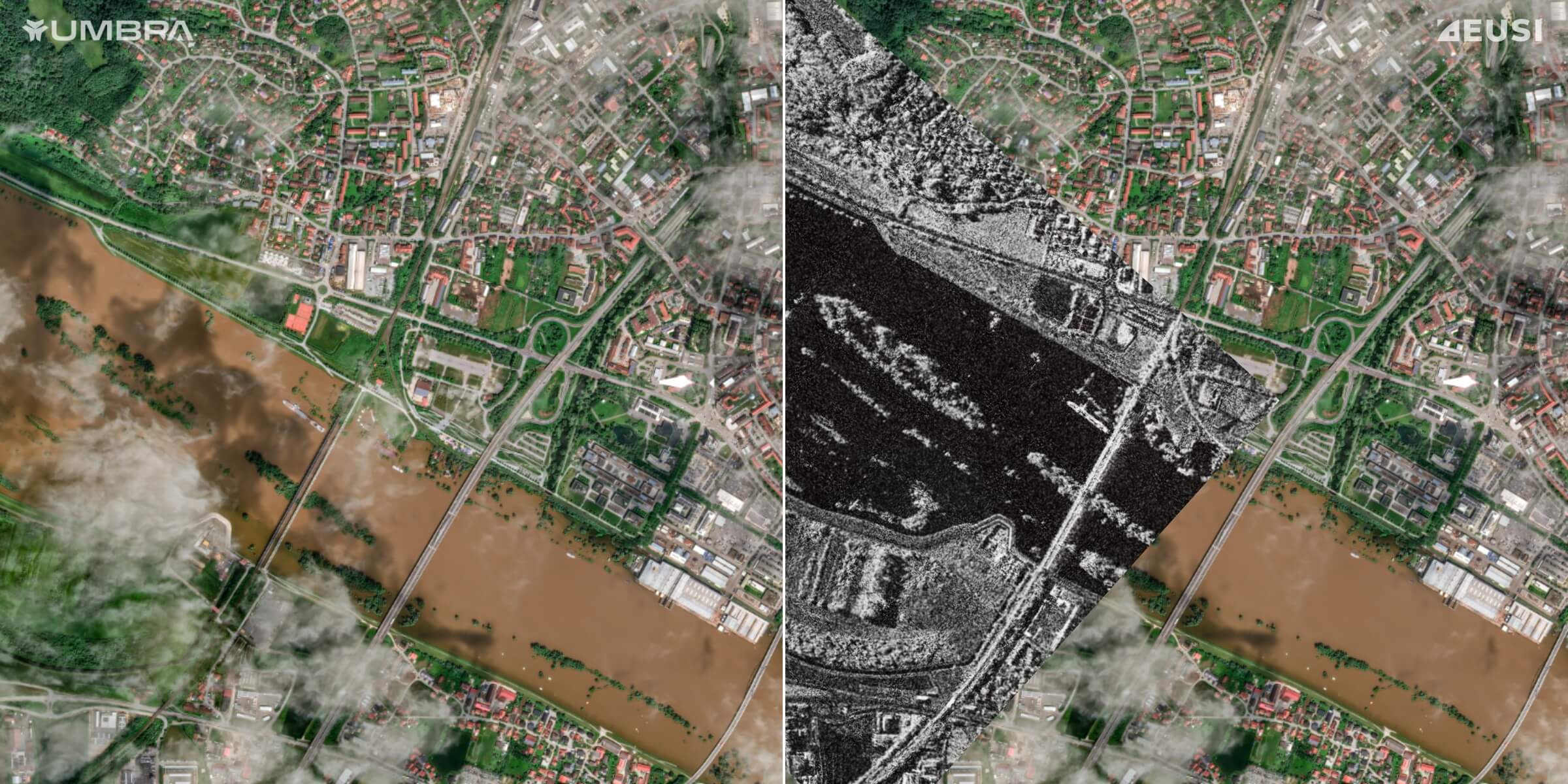
Optical satellite image © 2024 Maxar Technologies Provided by European Space Imaging | SAR image © 2024 Umbra Provided by European Space Imaging
Near Real-Time Monitoring: From Space to Action
For emergency situations, Near Real-Time delivery is possible: up to 15 minutes after collection for optical satellite imagery and up to one hour for SAR. Without losing precious time, relief organisations can rapidly answer questions such as:
- What is the extent of flooding?
- How many disaster responders are needed in each area?
- Which evacuation routes are currently obstructed?
- How many people need to be evacuated?
- What is the status of critical infrastructure?
- Is there a hazardous material spill that needs to be contained?
- Are there any disruptions to water supply systems?
- Were power lines damaged?
And many more.
Case Study: Floods in Southern Germany
The combined tasking of very high resolution SAR and Optical imagery has already proven crucial in several emergency response and persistent monitoring applications. For example in June 2024, Southern Germany was hit by floods and due to persistent cloud cover following the event, no usable optical satellite imagery could be collected. EUSI therefore worked closely with the DLR-ZKI (Centre for Satellite Based Crisis Information at the German Aerospace Centre) to rapidly collect and deliver both optical and SAR satellite images of the flooding.
Analysts from the IFAS (Indicator Monitoring for Early Acquisition of Innovative Satellite Sensors in Natural Disasters) project received the imagery and created maps detailing flooded areas – thanks to the high resolution of the radar imagery, the flooded areas could be easily distinguished as the water had distinct reflections compared to surrounding dry land. The results were immediately made available to authorities and relief organisations such as the Bavarian Red Cross (BRK) and the German Federal Agency for Technical Relief (THW).
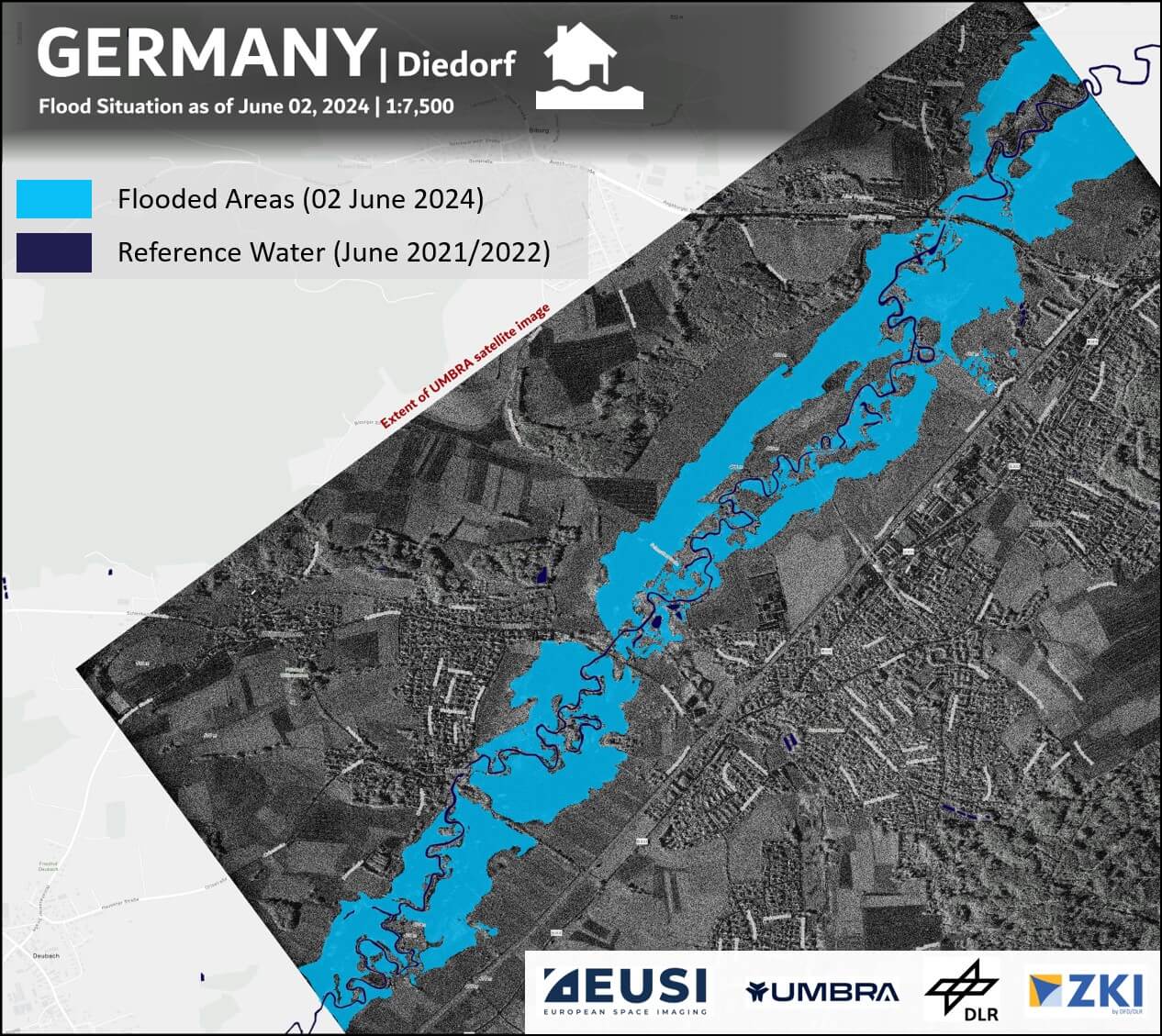
Map © DLR/ZKI 2024 | SAR image © 2024 Umbra provided by European Space Imaging
Empowering Regions Against Rising Waters
In the face of escalating climate change impacts, these innovative solutions are crucial for effective flood management. By merging very high-resolution SAR and Optical satellite imagery, DoubleShot offers rapid, weather-independent insights into flooding, enabling emergency responders to make informed decisions that save lives and property. Contact us to discover how DoubleShot can transform your flood management strategy.
Related Stories
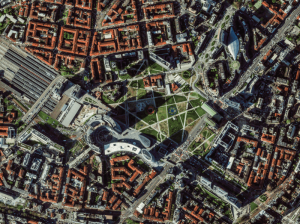
Europe’s Green and Digital Transformations with 25 Years of VHR Satellite Archive Data
Planning Europe’s future without knowing its past is impossible. The European Green Deal, Horizon Europe, the EU Biodiversity Strategy for 2030 and other policies all demand one thing: evidence. Not just today’s data, but years of history that show how our cities, forests, and coastlines have changed.
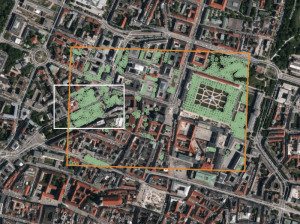
AI Uses 15 cm Satellite Images to Cut Costs and Increase Scalability in Forest Management and Urban Forestry
Forest managers across Europe face an impossible task: monitor millions of hectares with shrinking budgets while meeting increasingly strict EU environmental targets. But with the rise of AI and satellite technology, they now have new solutions at their disposal – smarter, cheaper, and more scalable – to monitor forest health, automate tree inventories, and plan sustainable logging. In this article, we introduce one of these solutions: an AI forestry algorithm developed by Arboair using 15 cm satellite data from EUSI.

GEOSeries: Extracting Insights From High Resolution SAR Imagery for Time-Sensitive Analysis
In this webinar, industry experts and advanced users of Umbra SAR data showcase how they transform SAR imagery into actionable insights in real-world mapping, monitoring and intelligence applications. See how NV5 and Umbra leverage ENVI SAR Essentials for advanced processing with time-efficient results, converting analytics into valuable intelligence.
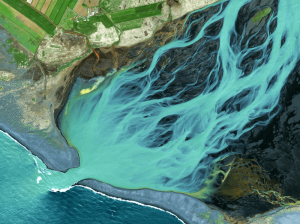
Using Satellite Imagery to Build Water Resilience Across Europe
Water across Europe is facing severe pressure. Climate change, urbanisation, agricultural demands and other sources of pollution are threatening water security and creating critical challenges that need to be addressed. We have to act quickly, build stronger systems and create sustainable water resilience practices – so that both natural ecosystems and human communities can thrive. Here is how satellite imagery from EUSI can help.


